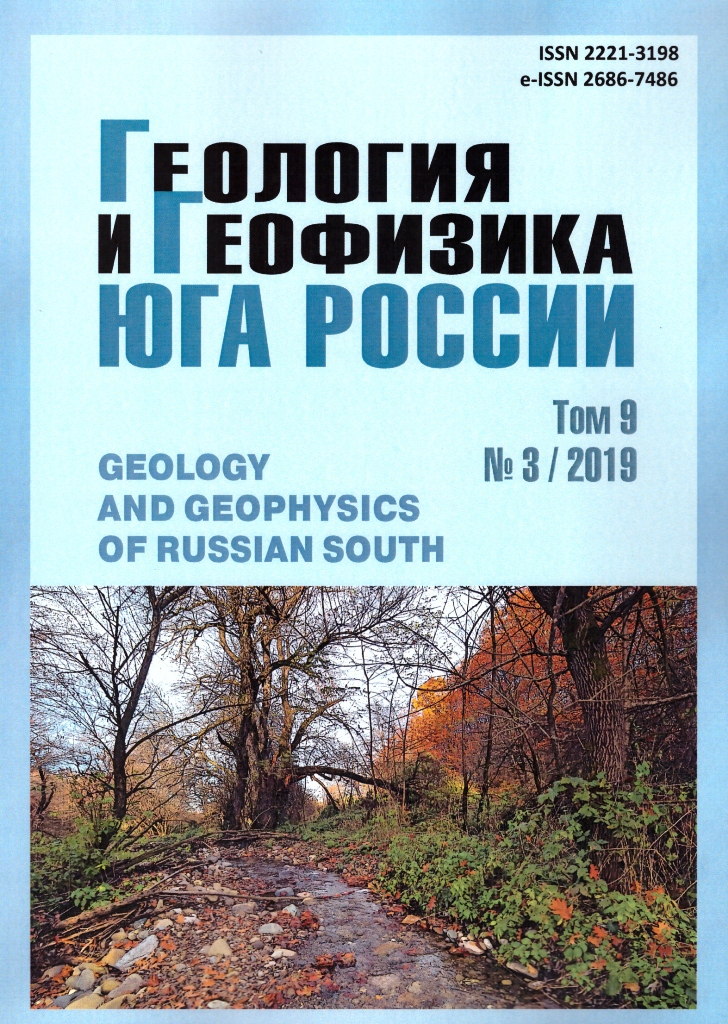Models of strong ground motions for probabilistic detailed seismic zoning of the territory of North Ossetia-Alania. Part 2.
Keywords:
detailed seismic zoning, earthquakes, strong ground motions, probable seismic effects, macroseismic intensity, seismic vibrations
Abstract
The article describes the models of spectra and accelerograms of soil vibrations, as well as nontraditional (“spectral”) models of shake intensity, developed as part of investigation to create a new version of the DSZ probability map of the territory of North Ossetia-Alania. Fourier spectra and reaction spectra are modeled as sets of spectral density levels (|S|) and spectral accelerations (SA) at different frequencies (f). These parameters are considered as random variables having a log. normal probability distribution for various combinations of earthquake magnitudes (M) and focal distance (D). The construction of distribution functions is performed in two stages. First, “average” estimates are defined |S| (М, D, f) or SA (М, D, f), and then, by adjustments, these estimates are approximated to the conditions of the considered territory. Corrections are made on the basis of the analysis of seismic and geological features of the region, affecting the considered parameters of SGM. Basic (“average”) constructions were carried out using more than 2500 spectra of soil vibration accelerations during earthquakes in various regions of the world with M=2.5-7.7, D=2-808 km and I=3-10 MSK points. A new method has also been applied for reconstructing the spectra of soil vibrations during earthquakes according to their macroseismic field. For this the data from macroseismic surveys of 27 strong earthquakes in the region with M=3.5-7.0 and shaking strength at the epicenter of 6‑9 MSK points was used. The data on the strength of the shaking at the epicenters of 189 tangible and strong earthquakes in this region from the work of A. A. Nikonov was used. The “spectral” intensities (Iс) are calculated through the Fourier spectra according to the dependences from the work of Yu. K. Chernova and A. Yu. Chernova (2008). Accelerograms were modeled both in the form of time vibrations generated by the random vibrations method and by selecting records of real earthquakes with their subsequent scaling in the spectral-temporal area. In both cases, the criteria for the accuracy of the constructions were the proximity of the spectra, as well as the amplitudes, periods, and durations measured on the accelerograms to the corresponding spectral models and models of unit parameters described in the first part of the article. Estimates obtained by means of the developed models for evaluating all the parameters of the SGM were compared with each other, as well as with estimates using other models known in the world – tests for “internal” and “external” consistency. A high level of consistency and noncontradiction of all simulated SGM parameters during earthquakes of all considered M and D is shown. The same tests performed for comparison for some other SGM models recommended for use in the Russian Federation showed the advantages of our models according to this indicator. The developed SGM models can be useful for probabilistic and deterministic (“situational”) analysis of seismic hazard in the territory of North Ossetia-Alania and other regions with similar seismic and geological conditions.
Published
2019-10-25
Section
Articles


